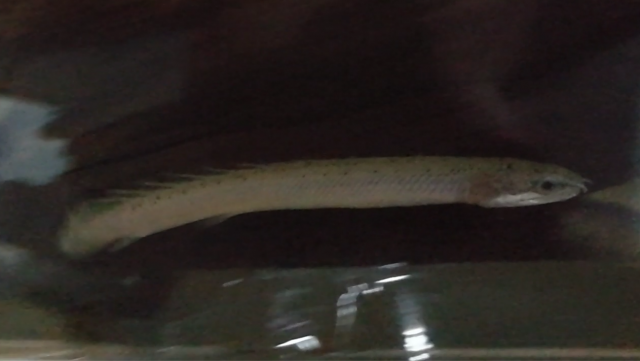 I have a senegal that laid eggs and after hatching and growing for 3 months, the bichir fries have grown bigger only for me to realize that one of them don't have both arms. I checked but there was no wounds or infection and it seems to be doing very well in it's tank. Any tips for me to help keep it alive?
I have a senegal that laid eggs and after hatching and growing for 3 months, the bichir fries have grown bigger only for me to realize that one of them don't have both arms. I checked but there was no wounds or infection and it seems to be doing very well in it's tank. Any tips for me to help keep it alive?I think my bichir is born without both arms
- Thread starter poutpotato
- Start date
You are using an out of date browser. It may not display this or other websites correctly.
You should upgrade or use an alternative browser.
You should upgrade or use an alternative browser.
It will make do on it's own and there really is nothing that you can do other than make sure it is able get enough food to eat.Being born without it's pectoral fins (not arms lol)the fish probably will not be able to move around as easily as others and other fish may outcompete it for food if you don't assist it somehow.
+1It will make do on it's own and there really is nothing that you can do other than make sure it is able get enough food to eat.Being born without it's pectoral fins (not arms lol)the fish probably will not be able to move around as easily as others and other fish may outcompete it for food if you don't assist it somehow.
Welcome aboard
I also agree with K krichardson . Congrats on the spawn.
I also agree with K krichardson . Congrats on the spawn.
bruh what?I think mine would probably prefer to lose his. He thinks he's a guppy anyway.
Congrats on the breeding. Would probably not be super detrimental,
 giseok jung
have you perhaps experienced this?
giseok jung
have you perhaps experienced this?
Interesting to see, and despite lacking their pectoral lobes, it looks very healthy.
The unfortunate case with P. senegalus is that nowadays, many of the cheaper captive bred specimens are the result of some degree of inbreeding. Breeding them another generation into that will have malformarions like this. I remember when the first Channa torsaensis came into the hobby (Cobalt Blues back then), I kept a group of fry which were second generation captive bred. First bred in Germany, then their offspring bred again in Wales and I had the fry of those. As they grew, at least three of them had some shocking deformities, mostly to the mouth though.
My only advice to this which hasn't already been said, is to keep it in shallower water and with no hiding spaces (except for surface cover like floating plants). As it grows, it will really struggle to get out of hiding spaces and will also not have much control when surfacing to breathe.
Happy fish-keeping!
The unfortunate case with P. senegalus is that nowadays, many of the cheaper captive bred specimens are the result of some degree of inbreeding. Breeding them another generation into that will have malformarions like this. I remember when the first Channa torsaensis came into the hobby (Cobalt Blues back then), I kept a group of fry which were second generation captive bred. First bred in Germany, then their offspring bred again in Wales and I had the fry of those. As they grew, at least three of them had some shocking deformities, mostly to the mouth though.
My only advice to this which hasn't already been said, is to keep it in shallower water and with no hiding spaces (except for surface cover like floating plants). As it grows, it will really struggle to get out of hiding spaces and will also not have much control when surfacing to breathe.
Happy fish-keeping!
Never seen one born without arms yet but it's quite common that they attack each other when they are very small and lose their arms because of it.Congrats on the breeding. Would probably not be super detrimental,giseok jung have you perhaps experienced this?


